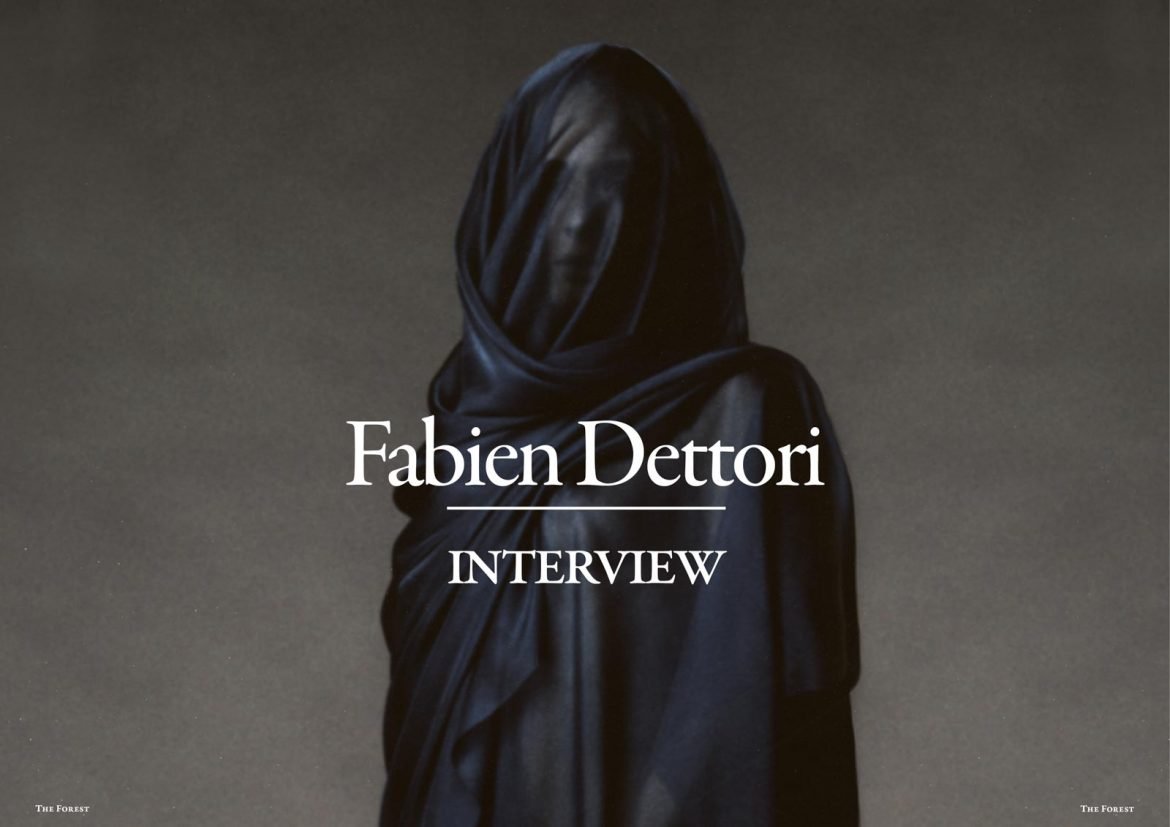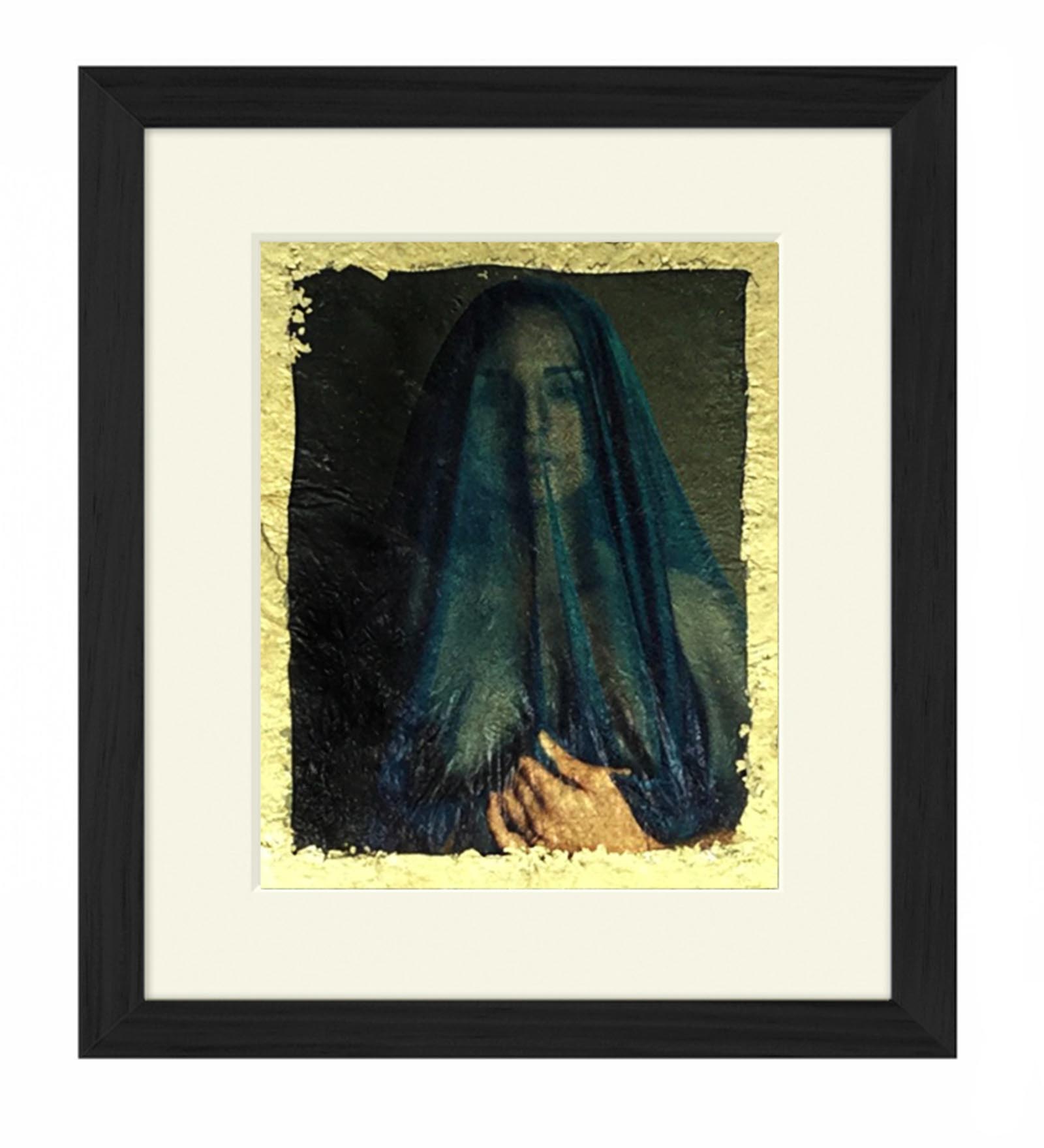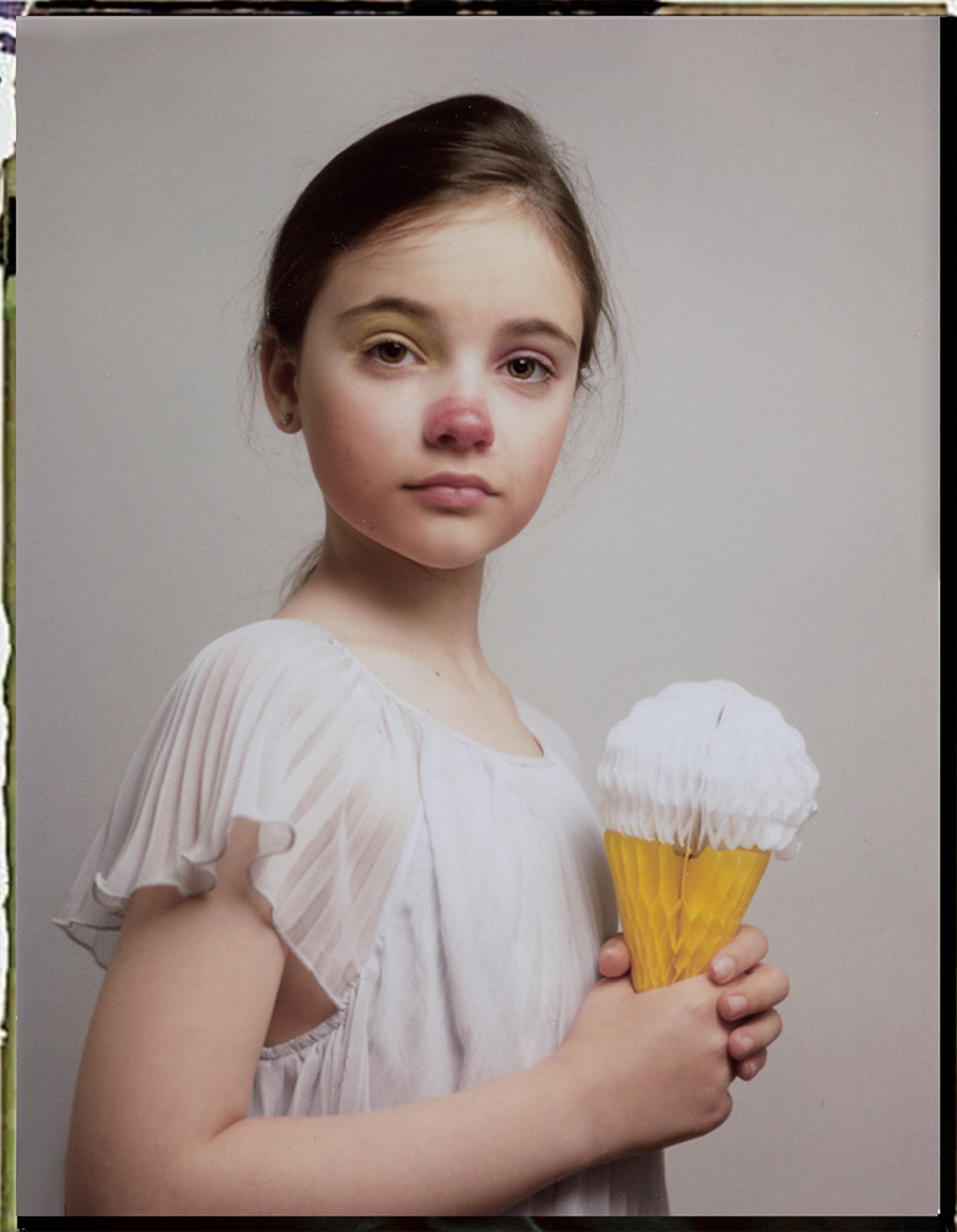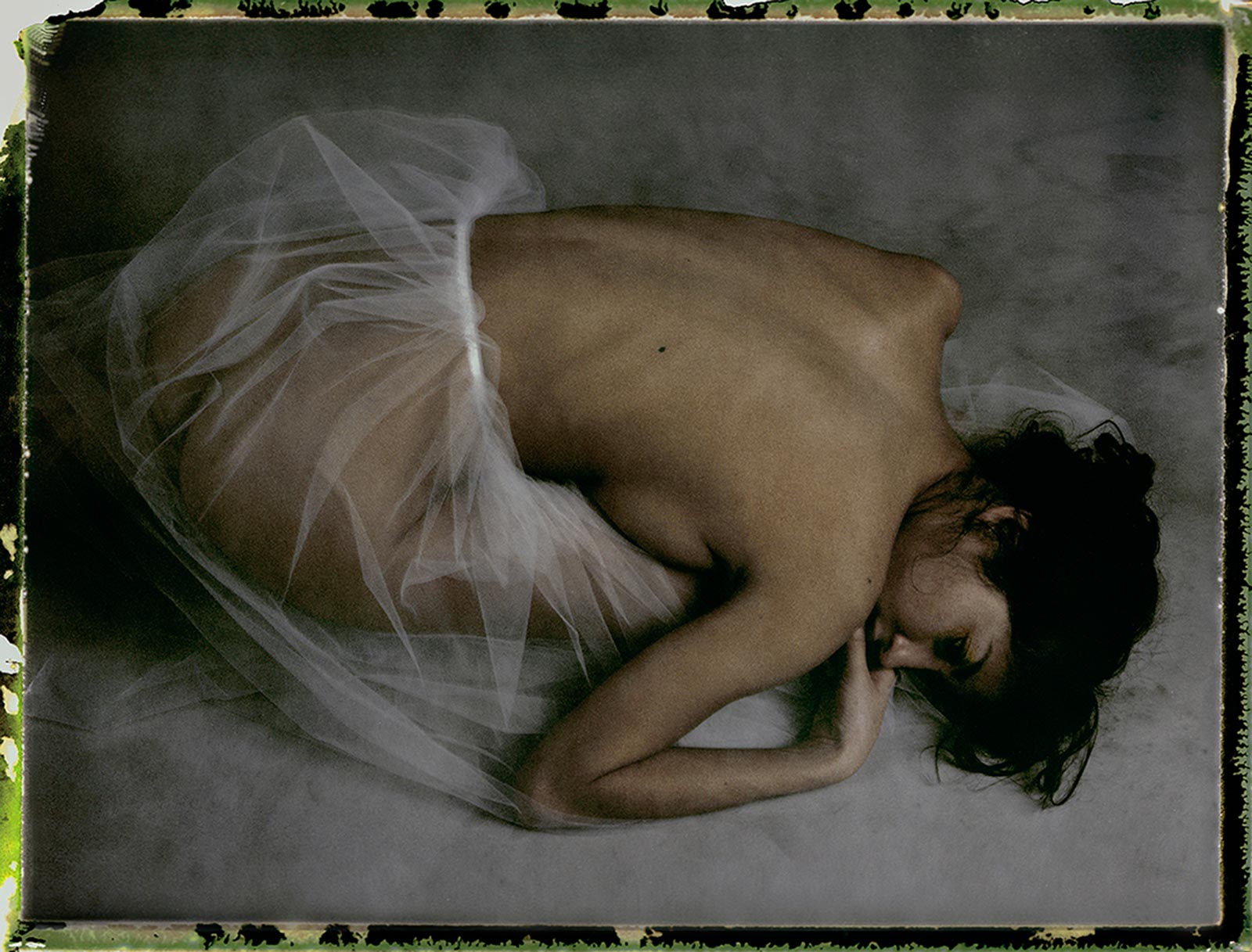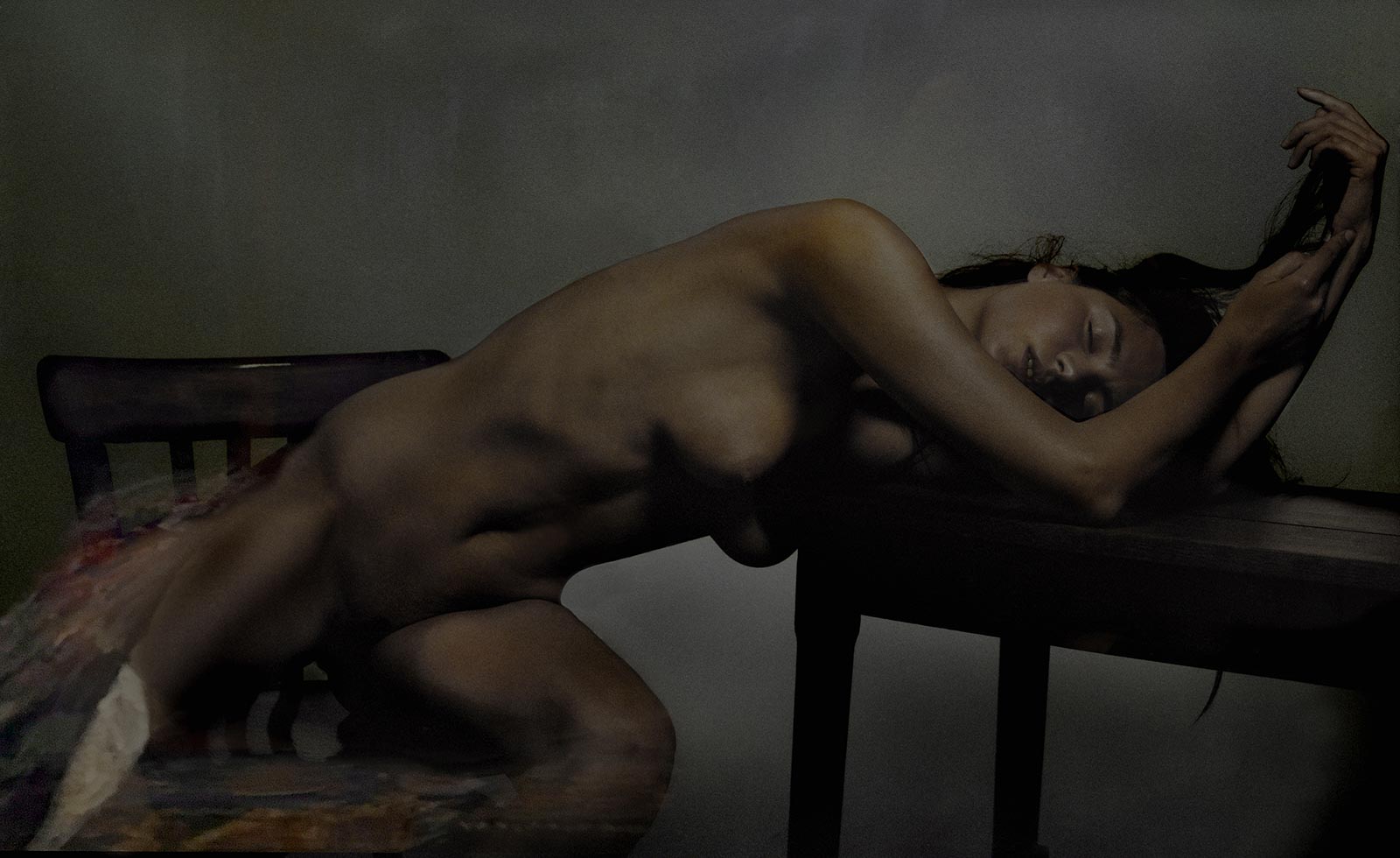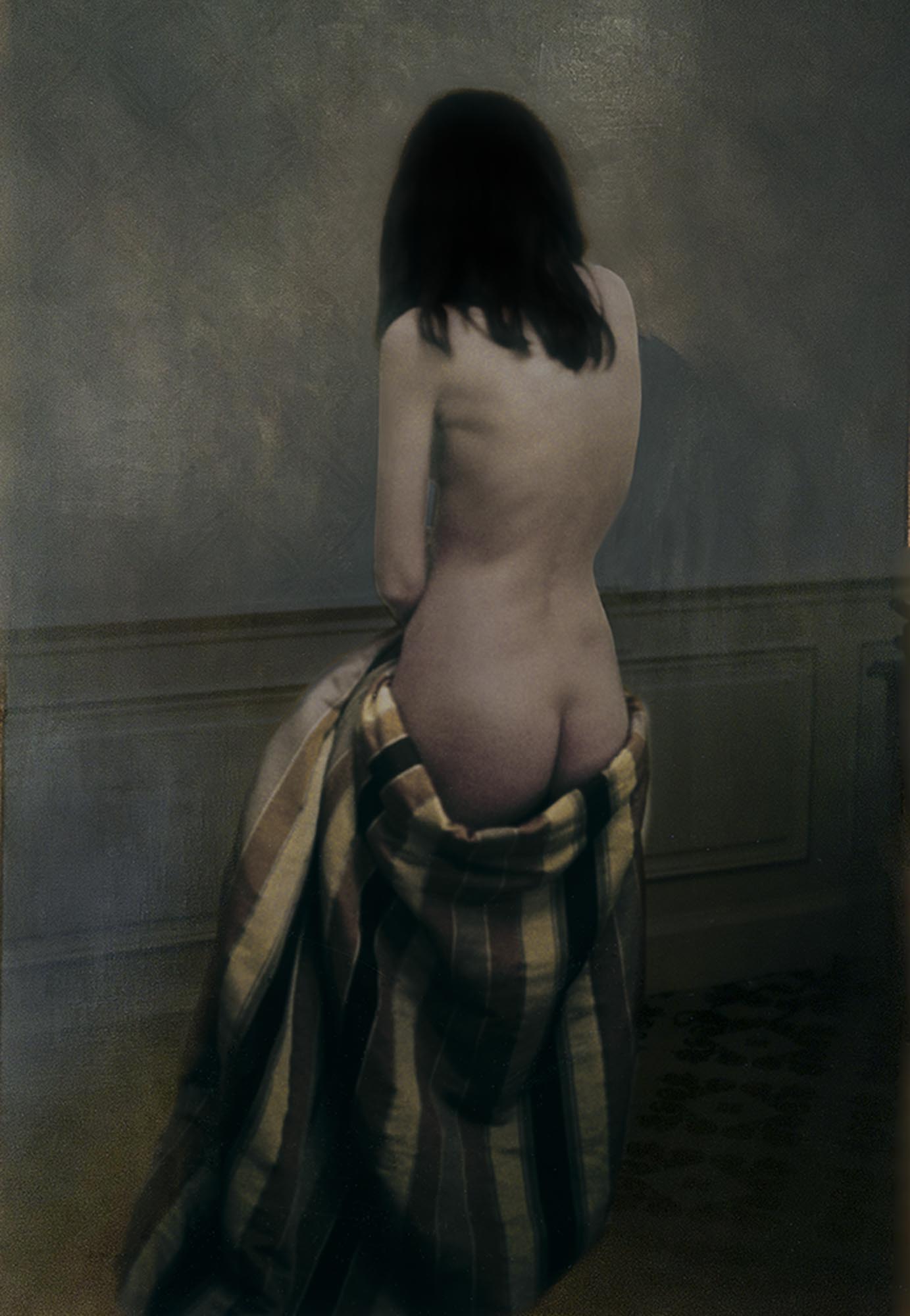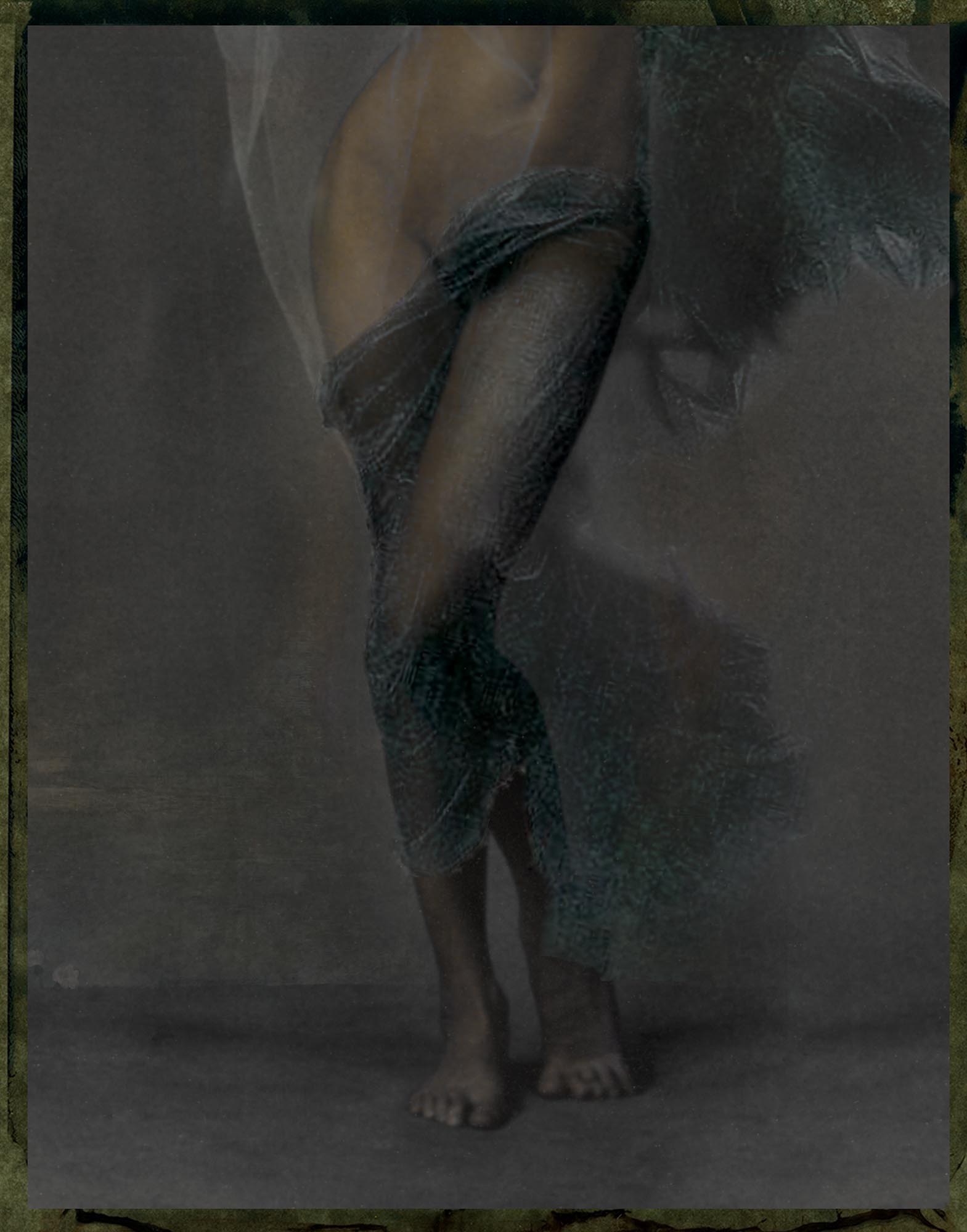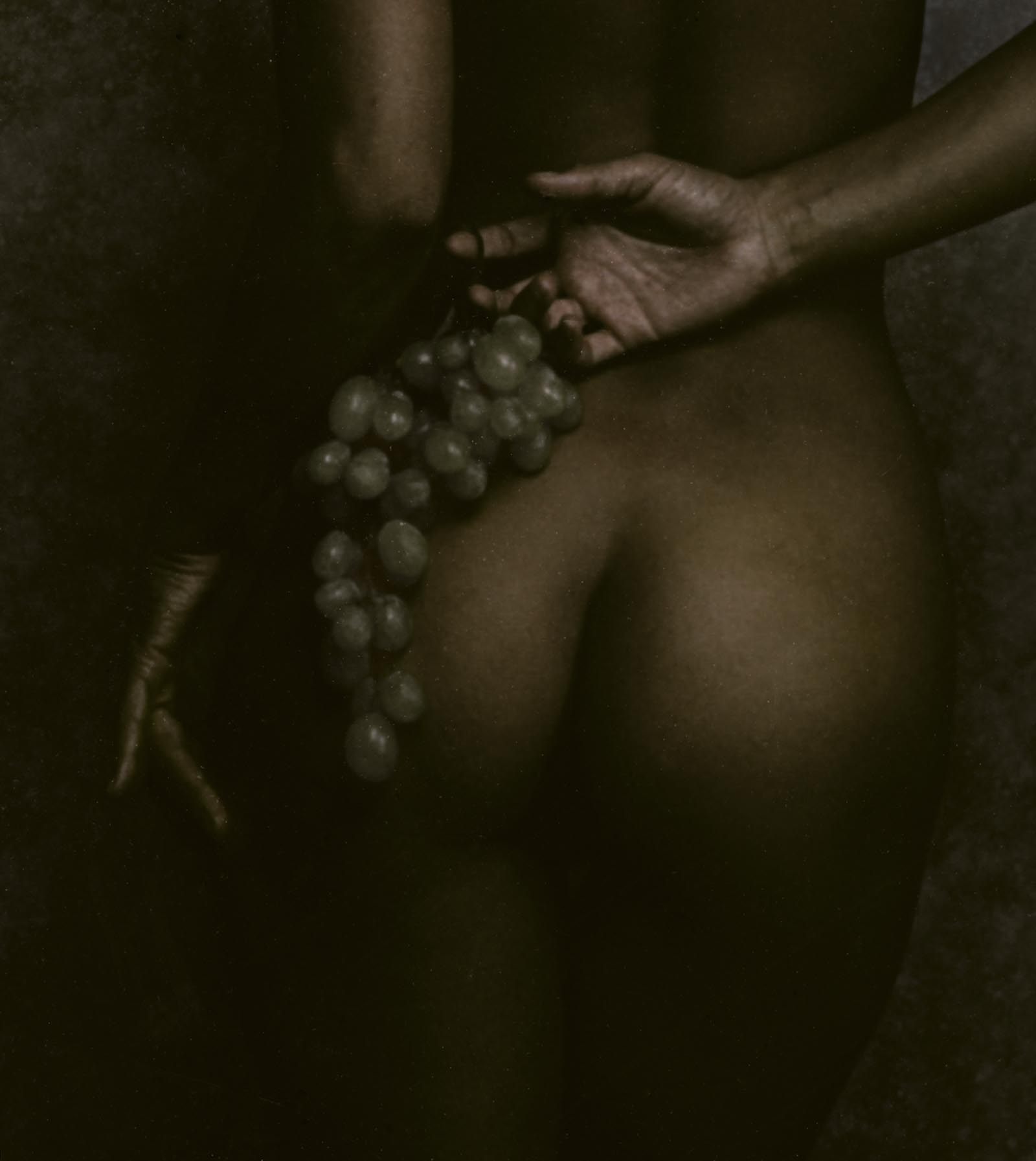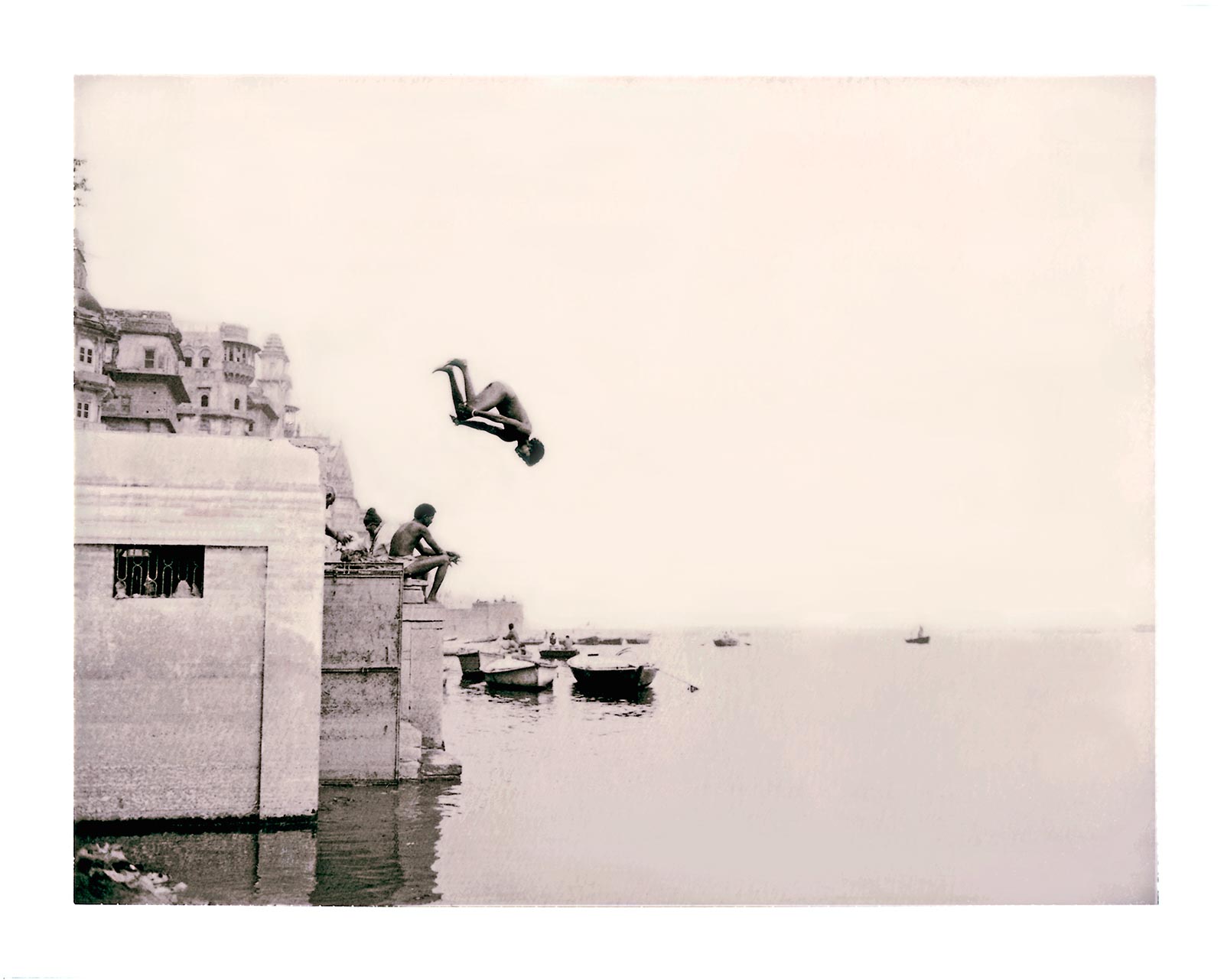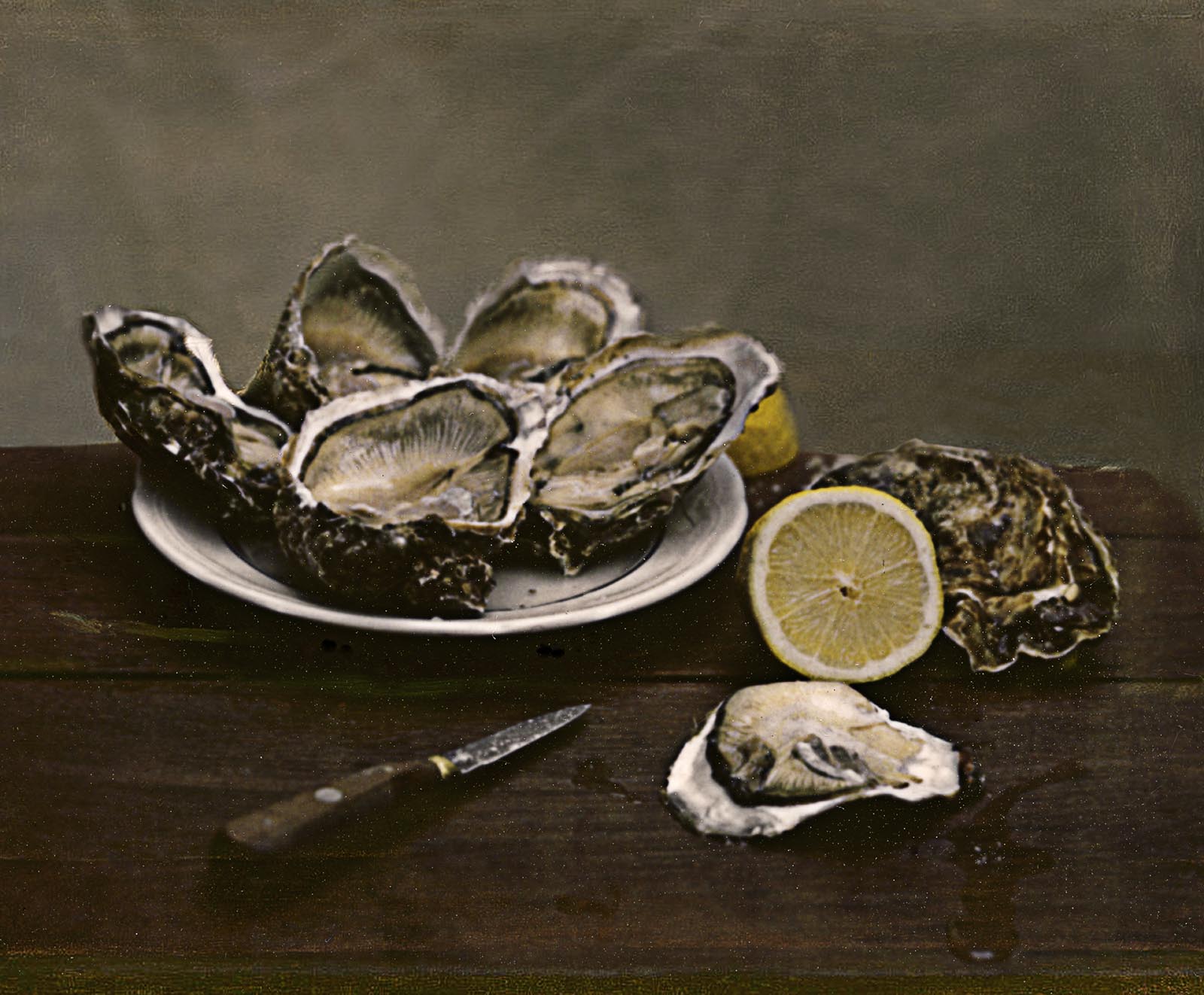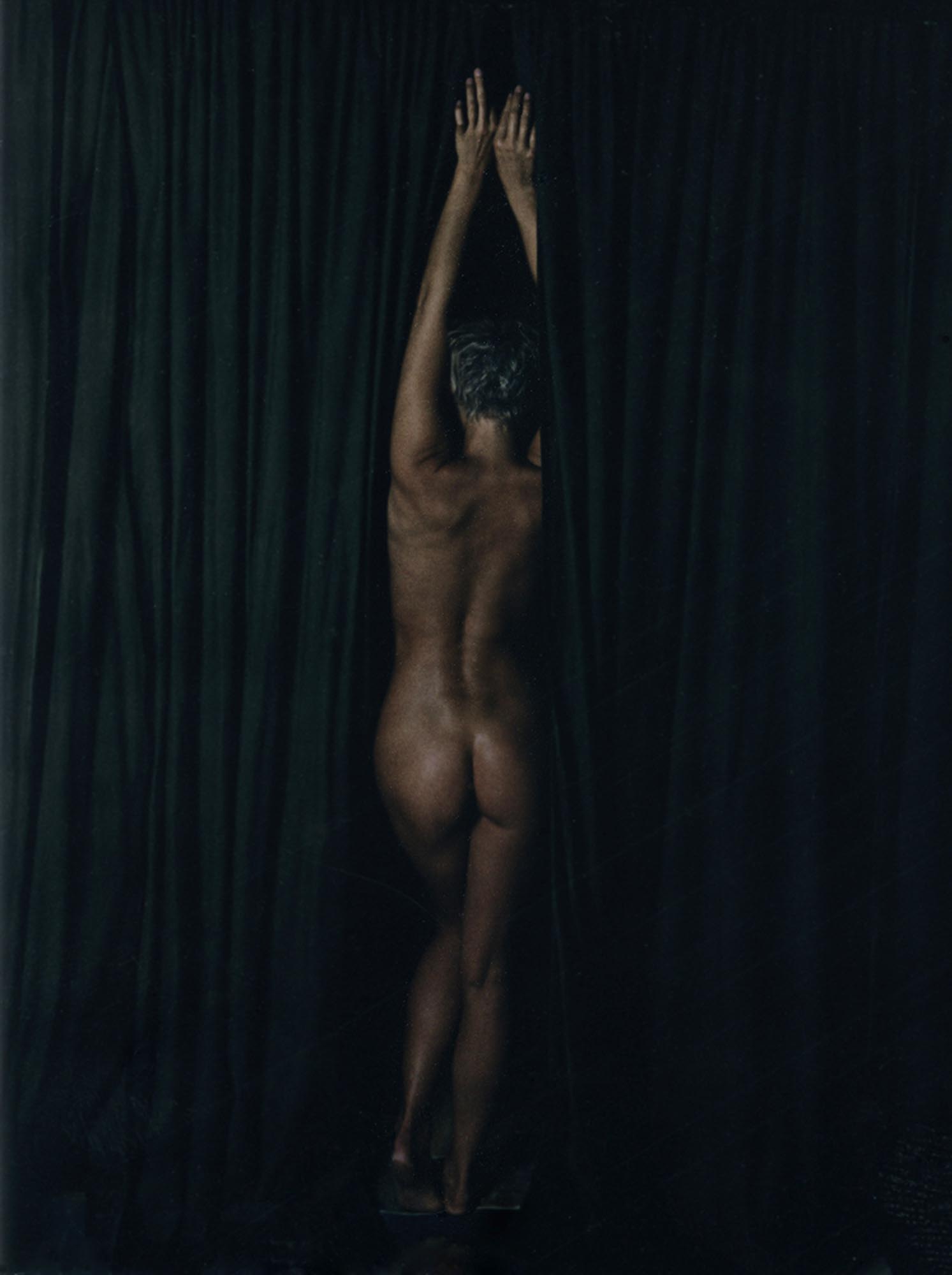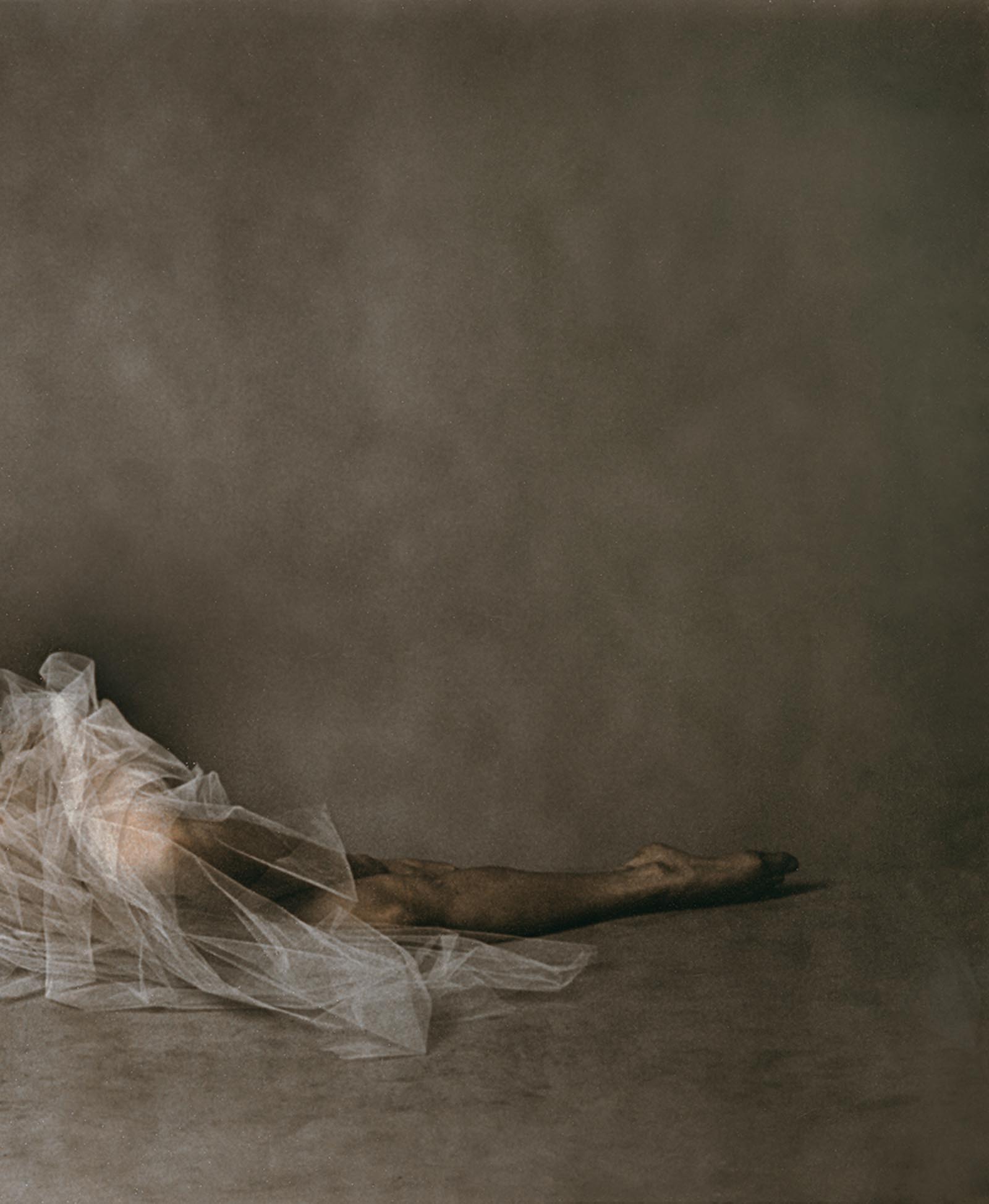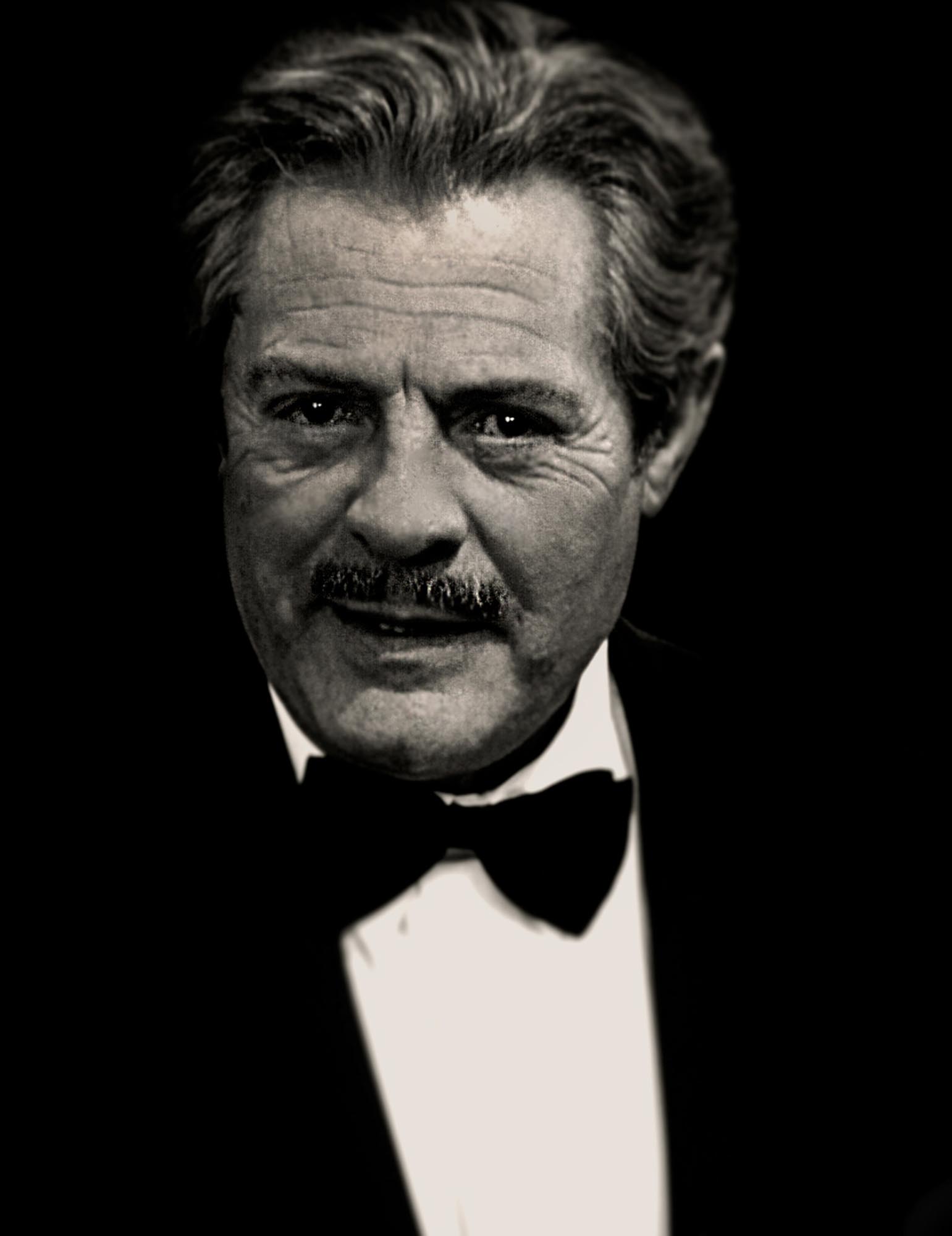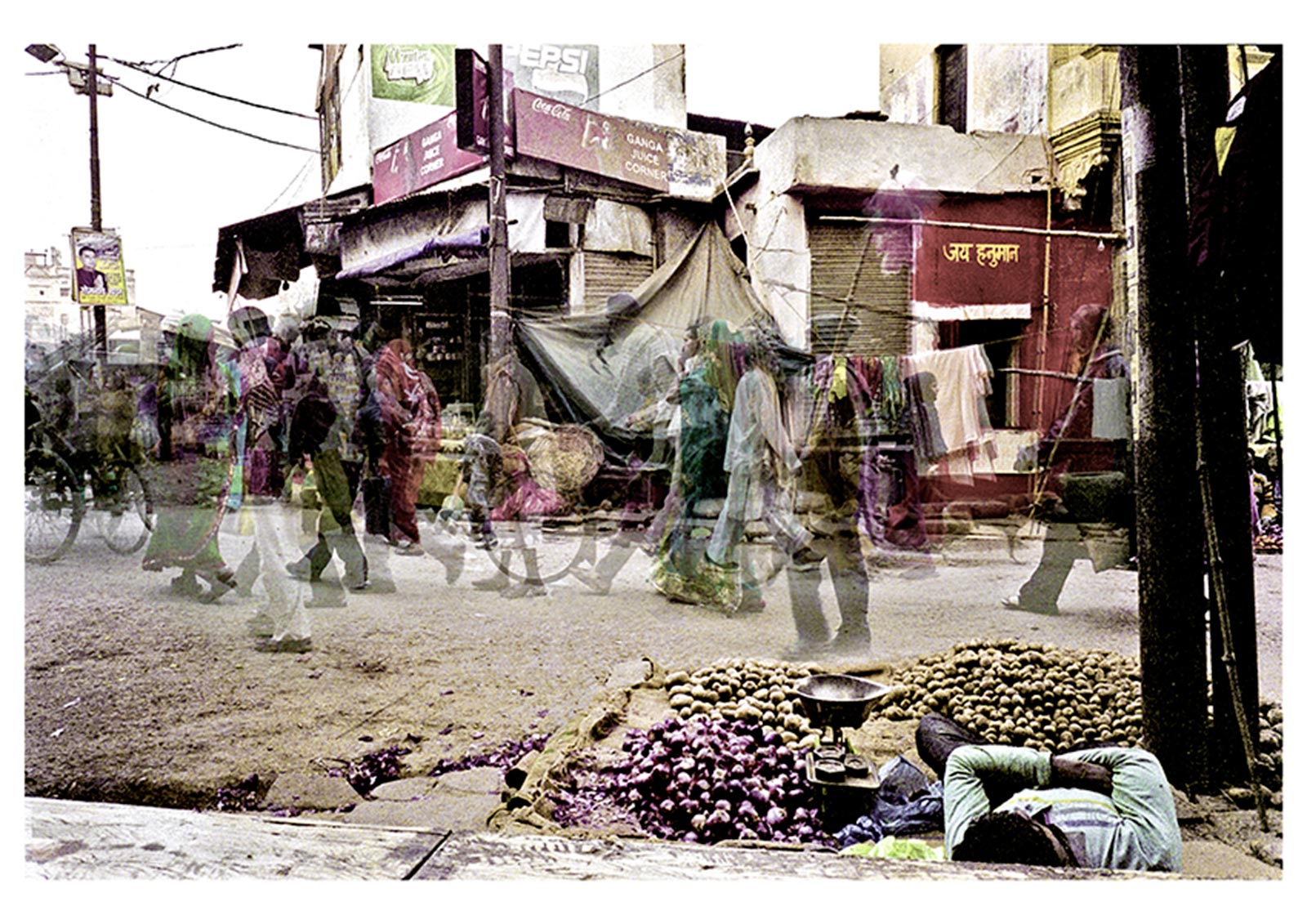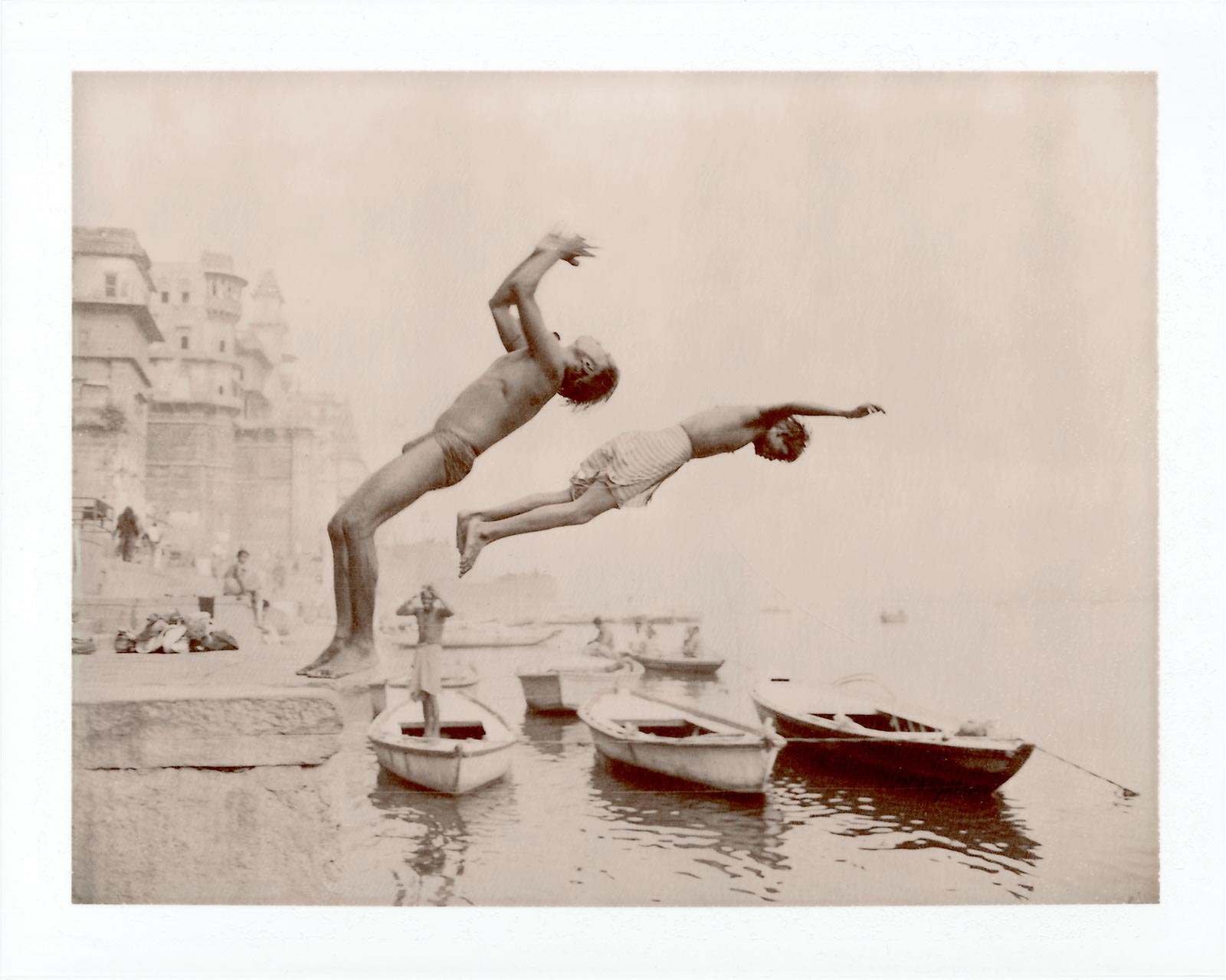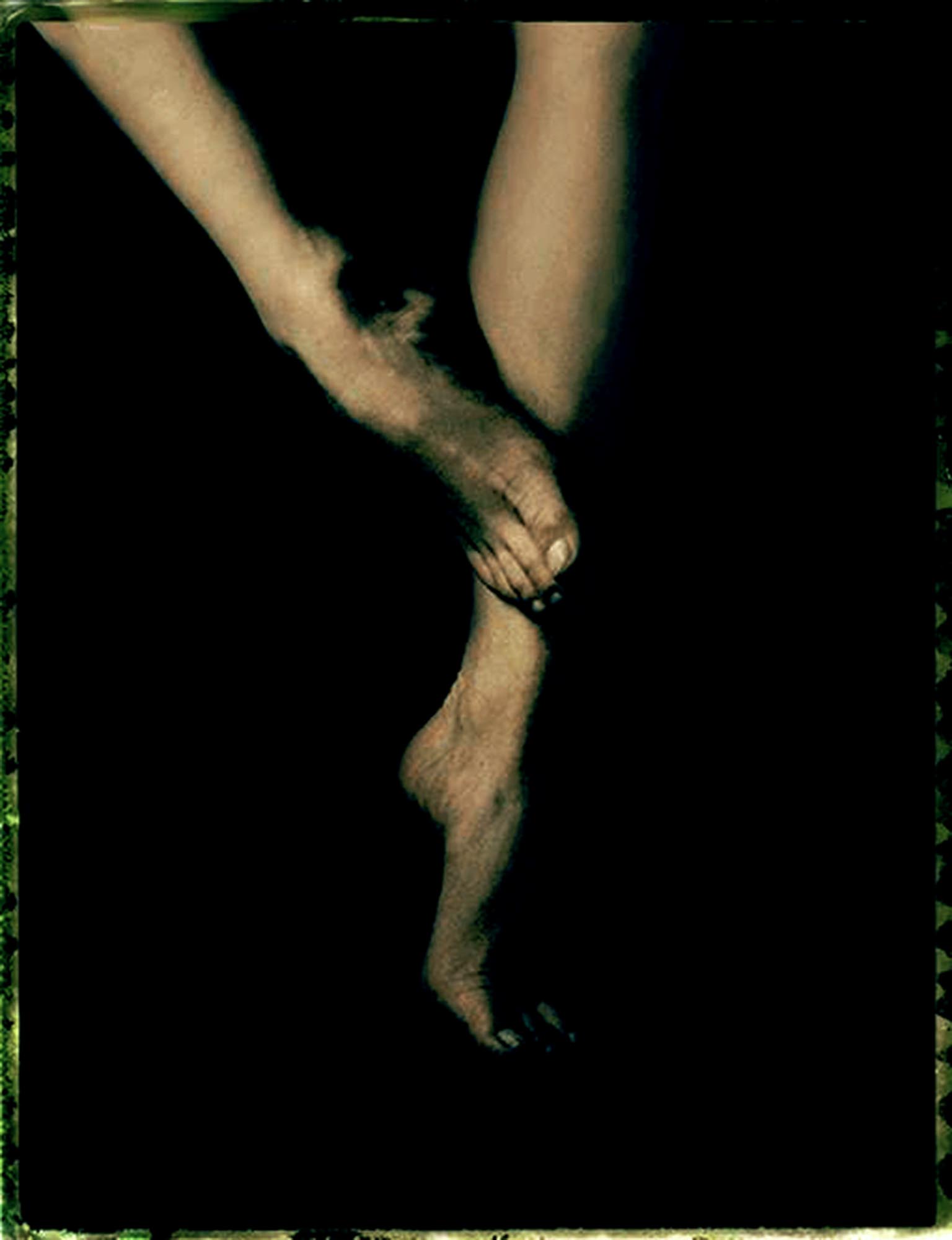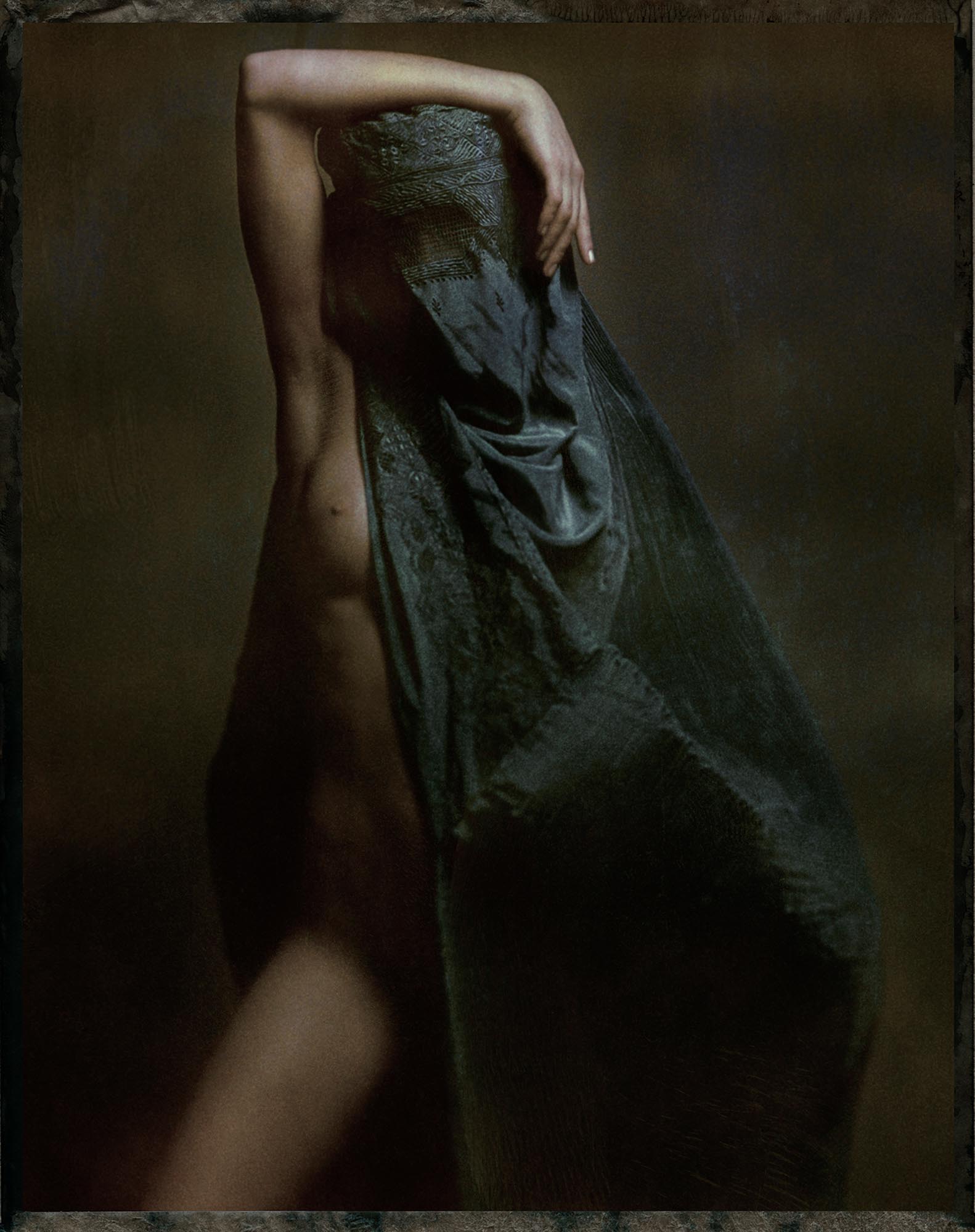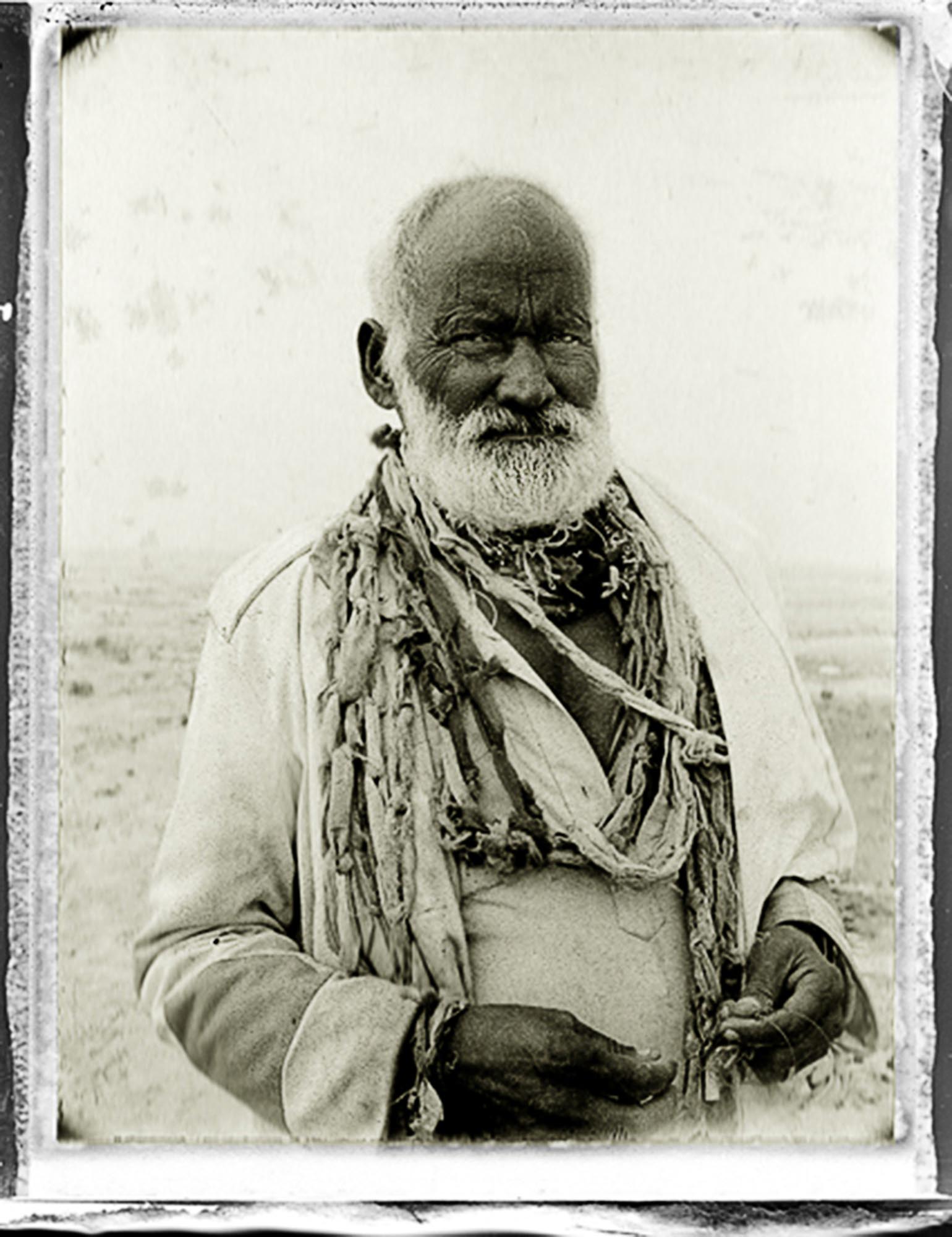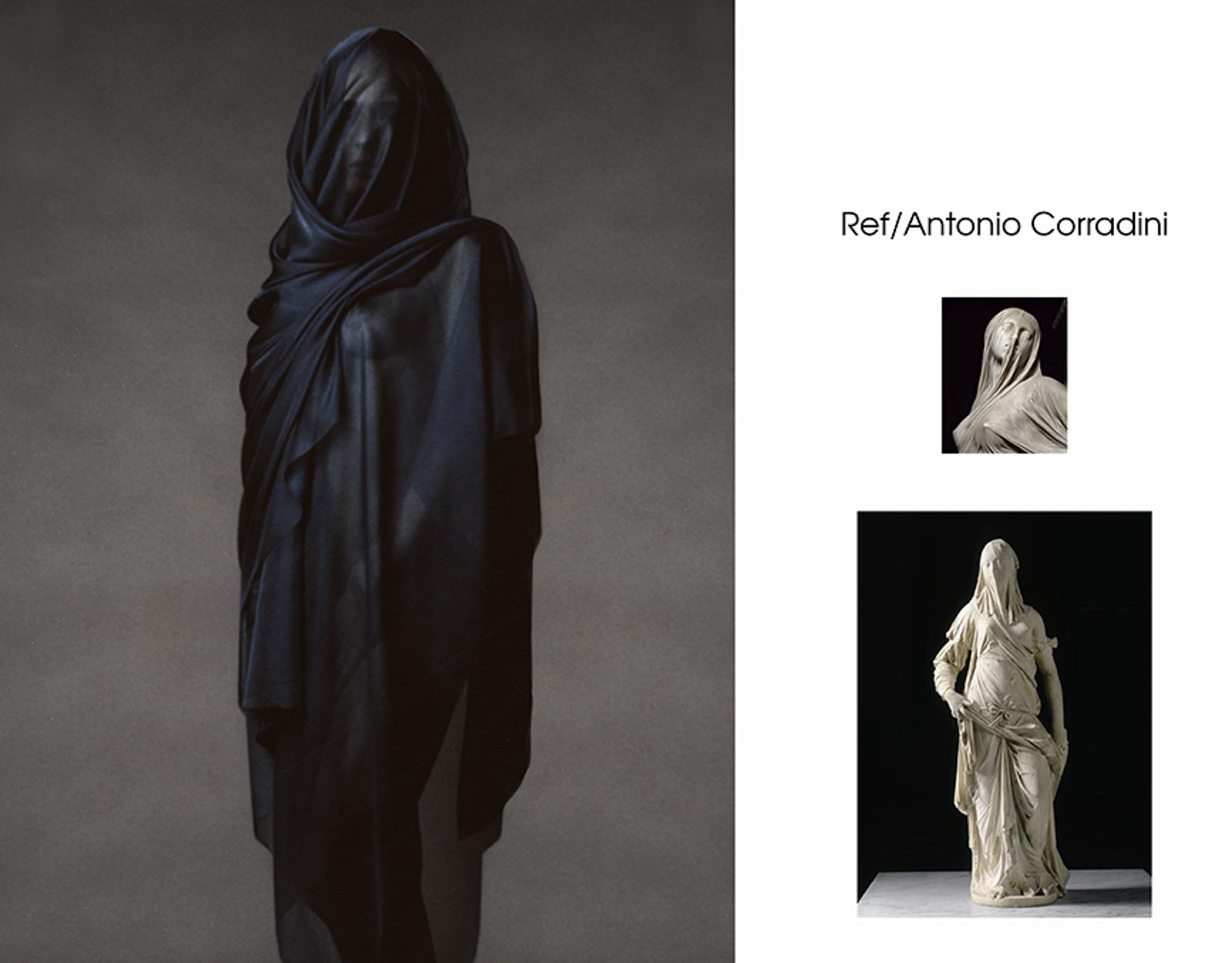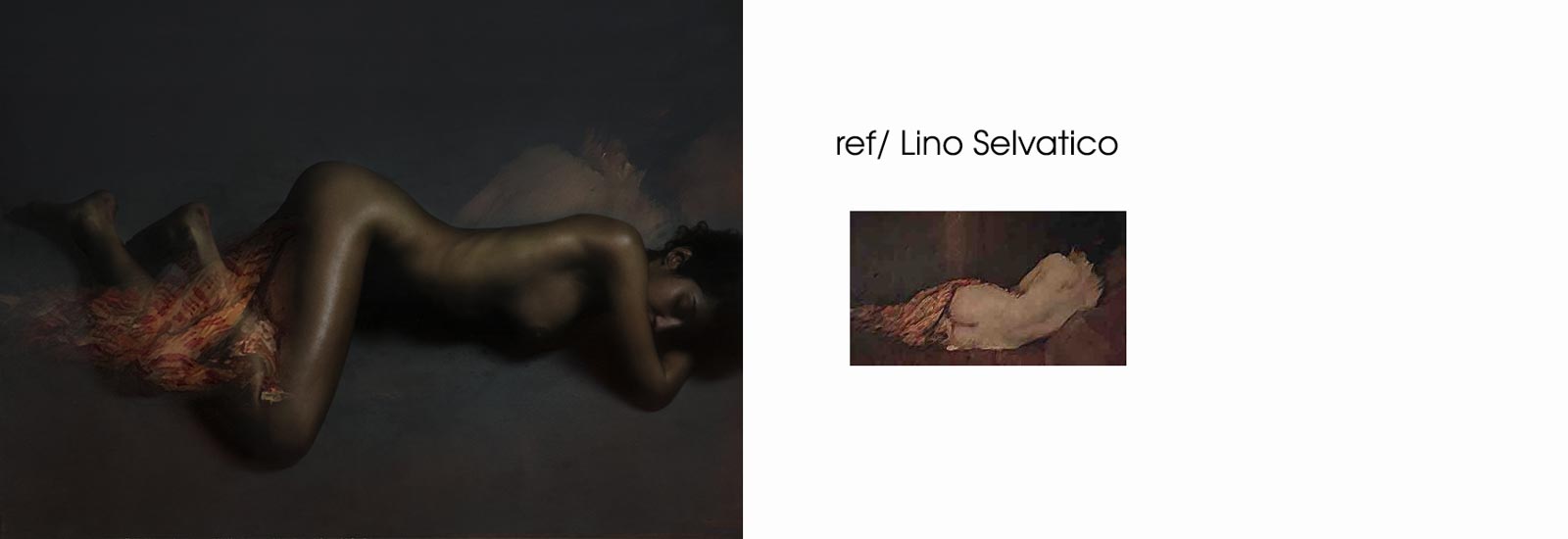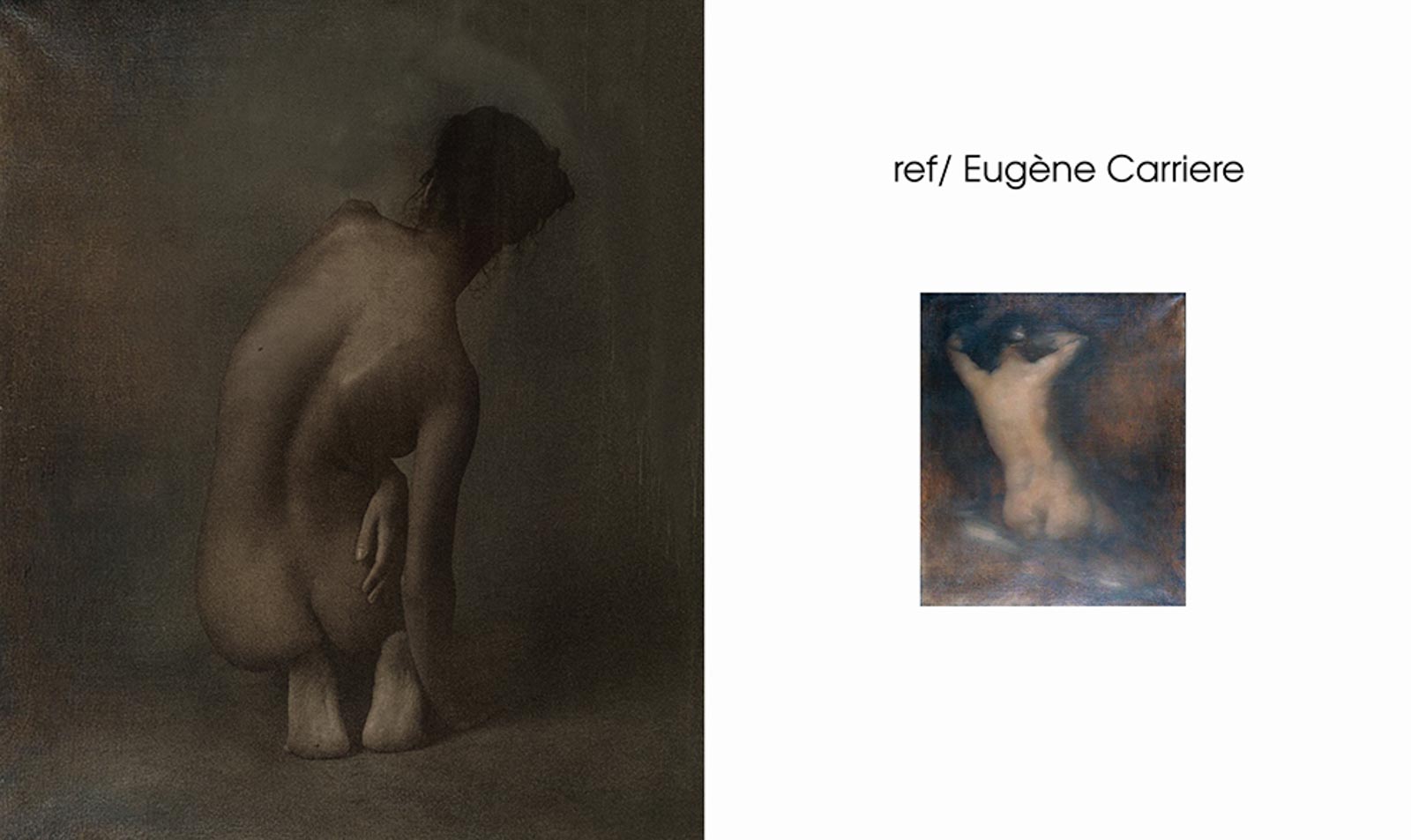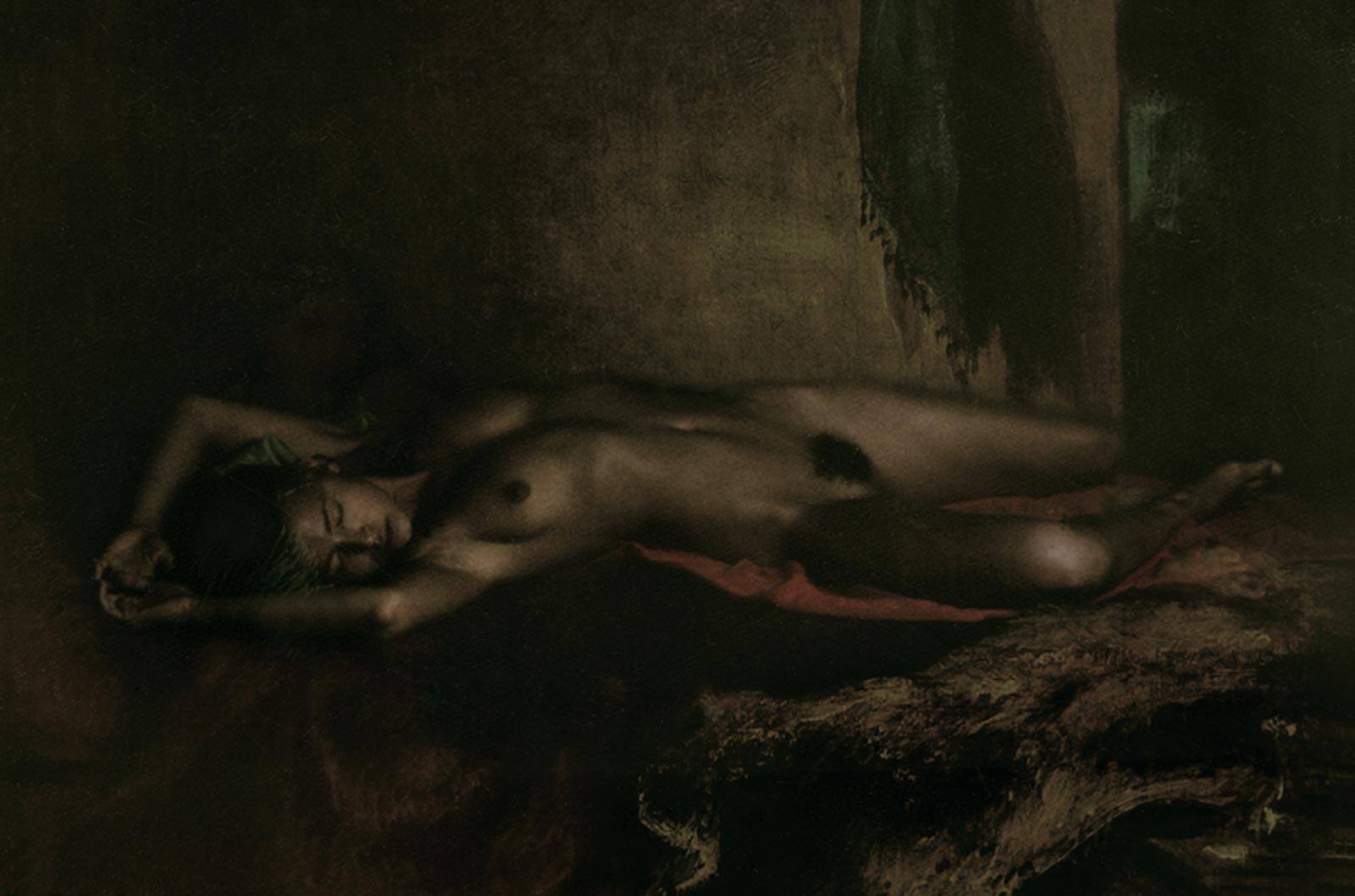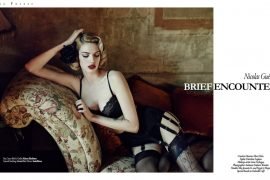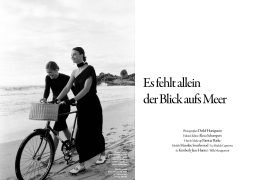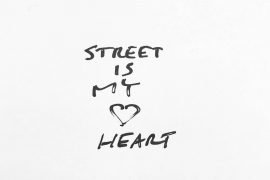Describe Fabien in three words.
Passionate, limitless, free…
Always looking forward to what’s coming, never looking backwards. I never give biographies for example, to galleries or magazines. The best is always yet to come. It’s a bit more than 3 words – sorry… Off the rules, as I said! 😉
You began with photo reportage, moved to fashion and now to fine art. How would you say that your style evolved over the years?
When I started as a photo reporter, it was a way to put a foot in the professional world of photography. But before taking snapshots of stars, I used to take some pictures of girls from my school in my bedroom. So as long as I can remember, it has always been my favourite subject. So it eventually led me to fashion photography. But in fashion, the main subject is often the clothes. I didn’t find enough artistic freedom in that. In my fashion photography career, Patrick Demarchelier is the one who inspired me to work in this domain. A book of his was the first photography book I have ever bought. I still have it in my library. I love his nudes. A fashion photograph can get out of date quickly, a beautiful nude can last forever. Then I discovered the work of Paolo Roversi and Sarah Moon and I realized that fashion photography could also be mixed with art in an almost painterly manner. My influences come from painting, art, music, experience, life…Mix everything together and you will get a green mud where I would draw poetry from for my pictures.
Your mother is a painter and your father practised photography. In the past photography reflected painting and now we see that many painters copy photographs. How do you perceive the spaces that painting and photography occupy?
Honestly, I have never thought about this before. I grew up with painting and photography so that my work ended up at the crossroad of those two mediums is a natural given. Photography is not a practice, to me, it is a medium. I use photography to express myself, it is my tool. That’s maybe why I have always felt strange to call myself a photographer. I feel better with the word artist that joins several disciplines without categorizing my work into one practice.
You bought Patrick Demarchelier’s portfolio when you were a teen and ended up working with him on numerous occasions in Paris. You also assisted Paolo Roversi. Iconic photographers who have inspired and continue to inspire countless of photographers, beginners and experienced alike. How was this experience to work with (and learn from) such legends of photography?
I was a studio assistant at the famous Studio Pin Up in Paris when I first started working with Patrick. I was working very hard to try to be the best assistant. I knew that one day, I would work with him, so when I saw his name on the schedule board of the studio planned for the day after, I stayed in the studio at the end of the day and slept on a sofa to be the first assistant present in the morning. So when the studio manager arrived, I was there already and started to assist his first and second assistant. Then Wendy, his first assistant, took me later through a second. One day, Eric Badault, the manager of Pin Up told me that Patrick wanted me as a first assistant because Wendy couldn’t come from New York to Paris. You know when you arrive at a certain level in this field, you don’t have any technical skills to learn. You are working, it is not school anymore. To be a photographer’s assistant is a real job and often underestimated. What you learn is the creative capacity this kind of photographers have.
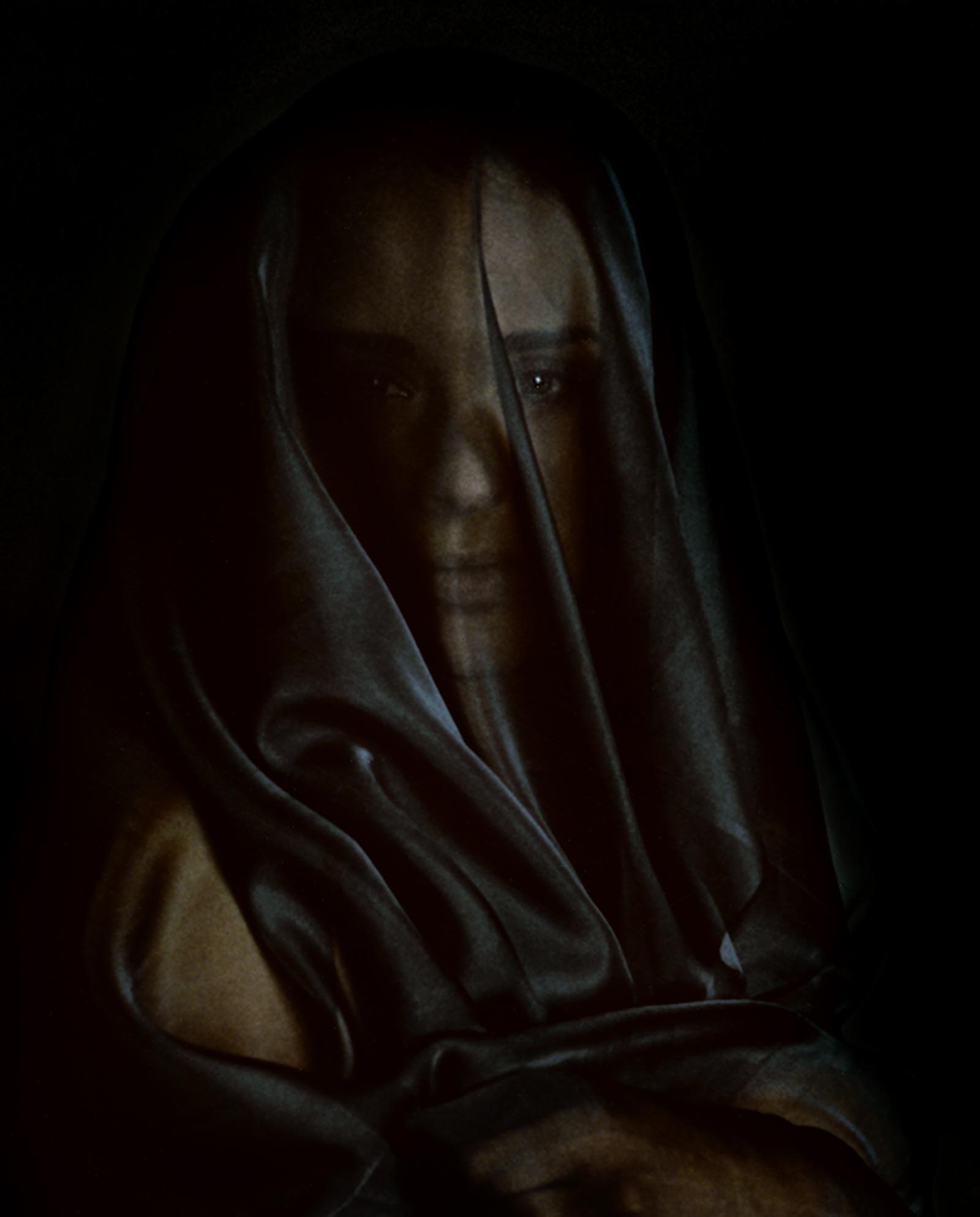
Can you imagine, with Patrick, we were working on 3 studios at the same time? One campaign for Chanel, one cover for Harper’s Bazaar, one editorial and the day, after a shooting on location in the streets of Paris. And he is doing this at the top, for so many years. I have a huge amount of respect for him. I also loved the way he has to direct the models. Always passionate and focused on all the details. I still can hear his voice when he is shooting, screaming: « BEAUTIFUL!! BEAUTIFUL!! BEAUTIFUL!! » He is great!
With Paolo, I have discovered a totally new way of working. He is an artist, more than a photographer. Using his 20×25 Deardorff field camera and Polaroid. Mixing natural and artificial light. I wasn’t his first assistant and I didn’t work a lot with him but he opened my eyes to what photography could be. He made me see that photography could be an interpretation of life through the lens of your soul. And he is the nicest man you will ever meet in this business. Everybody would tell you the same. With him, I have learned that you have to forget the traditional techniques and experience some unconventional ways to work. Priceless!
Many younger photographers try to study photography, others to become apprentices to established photographers, while others try to carve their own path from the beginning. What worked for you and what would you suggest to a young person who would like to pursue a career in this field?
If there is one thing that I will always remember, it is to stop listening to advice! Paolo, Patrick, David LaChapelle, they all told me that. To believe in yourself and work hard. Never complain, because working in a field you are passionate about is a luxury. I wasn’t made for school. I am a total autodidact. When I quit press photography to go to fashion and studio photography, I first did an internship at RVZ, which is a light and camera rental company. I used to make some drawings of all the light systems on a notebook with the technical details. Internet wasn’t existent at the time. I even made a trip to Los Angeles to visit the Arri Factory (HMI light projector constructor) – it was my Disneyland.
You have to be passionate and to believe in yourself. I have learned the different technique of lighting very accurately. I had the chance to work with Eric Badault, the manager of Pin Up, who has a very demanding and strict management, almost military. I have learned to be on time, organized, motivated and focused. He taught me those things at a time during which my life was the total opposite! And I wanted to succeed in a very competitive field. It is still useful today. So yes, for me to work as an assistant is the best and fastest way to learn, and it also gives you the opportunity to make personal work in your free time.
The fashion industry can be quite daunting, especially when dealing with the commercial aspect of it, control and the demands set by clients and art directors. You took a five-year-long break from photography. Why so and is it related to the way the industry is structured?
After years in fashion, I felt a bit empty and my work became more and more out of control. I started to become someone who wasn’t me. I felt that it was time for me to explore some other fields. I had become a music producer. I’ve created my own company and started to produce concerts, tours and then, music for films. It was a fast enterprise. But I believe that you can’t escape your destiny. I have met Serge Bramly and Bettina Rheims on a lunch and helped them to find some locations and casting for a project. It sometimes to at all. When I got back to the recording studio, I was working with a composer on a soundtrack. There were 50 musicians that I hired to record this soundtrack and suddenly I felt that I wasn’t in my right place. I was kind of proud of this achievement, but the challenge was done and over. To see Bettina at work gave me the envy to go back behind the camera. But not into fashion, I didn’t consider it for a second to get back into fashion. I think I was ready to finally work on my personal projects. To do what I like. At least to try.
But when I quit fashion photography, it wasn’t because of how the business was working at that time. It was a personal choice. I have always wanted to live different lives. When I was into fashion, every two years I used to disappear secretly for several months and experience a totally different life. I have been a bartender on the trains for 3 months and a few years later I even managed three sex shops at night in Pigalle (the red light district of Paris) for 2 months! I did this just to experience another life and to fulfil my curiosity, to meet new people. Fashion can be a very closed world. It was my way to escape from it and also to renew my creativity. It might sound strange, but I loved it. I could write a book about all those experiences! And it’s maybe not over yet…Those experiences are feeding my work. It is only to the extent that one accepts the worst that one can have something to say. I believe that if you live a classic life you will make some superficial work. I try to dig deep in life.
Your images offer a very painterly depiction of your subjects, with pastel muted tones, lacking any temporal connotations. How did you develop this style?
I always have been more into paintings than into photography. I don’t really go to photography festivals often, I prefer museums. My inspiration comes from painting and sculpture. Photography is my brush, I paint with light in a way. Photography is normally used to translate reality. What I try to do is to transform reality through a vision, to interpret and not to show directly. I use very classical light. I work with some Profoto’s D2 flashes which are very accurate and well balanced, but I always put some little filters in my lightboxes. I like to work my light in an artisanal way, like a craftsman. I always transform things, to put some magic into it and try to always experience new things, new colour filters and even sometimes to give a kick in my camera stand when I shoot. In fact, my baseline would be « Learn your classics and make your own rules » That sounds like me!
How different is it to shoot models in analogue, when they have been so exposed to the instant gratification and fast shooting tempo that digital offers?
To shoot in analogue gives a depth to the picture I didn’t yet find in digital. And I am much more into a pictorial work. That would definitely won’t fit with digital, which is closer to reality. I also like to compose my pictures, to think about them before pushing the button. I am a slow photographer, I don’t need to shoot 200 pictures. If I shoot 20 shots, it is a maximum. I mainly work with professional instant film, so we can shoot two or three photos, look at them, set the lights or the details and shoot again to do better. The pace is not the same as shooting in digital. There is much more place for dialogue and communication with the model. I like to take time when I am working. It is a very different way to work – maybe even a bit old school!
How do you cast your models?
Actually, the casting happens mainly on social networks. First, we are following each other and after a while, we organize a meeting before shooting. It is very important for me to feel the personality of a model. I don’t choose them to concretize an idea; it is the opposite. The personality is going to inspire me, which will lead to the idea, and the line to follow. I need to feel the energy; what they like, what their dreams are, what their past is like. I try to work on the sincerity, to make them forget the reflexes of modelling. It is a relationship between painter and muse. I can also cast on the street or at a party, but it is very unusual since I am too shy. However, I would love to do it more often. Sometimes I regret it for months to not have had the courage to go and see an unknown girl I saw and who inspired me by her attitude.
You covered the Cannes festival at 15, back in the late ’80s. How was the experience for a teenager and also compared to how the festival evolved over the year? Have you ever been starstruck by the celebrities you photographed/met?
It was fantastic. Firstly, because it was my first professional experience. I still remember the great happiness I felt when I received my pro accreditation. I think the guy in charge at the office was tired to see me around asking for it. And then, it was the jungle between the photographers on the red carpet. You have to fight to make your pictures. It was fun. I have never been impressed by celebrities, so I remember having some good times with them at parties. I was very young, so they were curious about me. What is this kid doing here?! When I am looking at my archives, it is looking more and more like a cemetery. I have some portraits of very famous actors who sadly passed away…
What would you like your audience to feel when they see your images?
I would love them to take the time to try to catch the different layers I put into my images. All of them have some hidden references to paintings or some political manifestos. I would like my audience not to see my work as only nude photography because it is not the point. It is much more than that; I try to tell stories, emotions, sincerity. I try to show and share what moves me, to show an aspect of my life. My work consists in giving shape to the experience lived in its deepest dimension, so that it becomes for the spectator himself a lived experience.
Many photographers fail to understand the importance of having a good agent. Would you like to explain a bit this aspect of the industry?
The commercial aspect of this business is a real job. The time you spent in negotiations is the time you don’t have for creation. To be an artist is a very lonely job. It is sometimes to have someone you trust who can give you a different vision of your work and how you can sell it.
Films/documentaries that should be on our must-watch list?
A lot! I just bought ‘Life through a lens’ about Annie Leibovitz – I recommend it. And I have discovered The Museum Channel on the TV-cable, they broadcast some TV-shows and documentaries exclusively about art, museums, curators, artists. I am addicted. But don’t follow my advice – I used to be also addicted to “the Osbourne Family” reality TV show! Haha.
What are you really bad at?
Taking pictures when I am on holidays… I can’t. Or wedding photography! When I can’t control light. I am not so good at setting my digital cameras either.
What have you learned about yourself being in this industry/field?
To never give up and if you work hard enough good things will follow. Learn your classics and make your own rules.
Best advice you’ve ever been given?
Never listen to advice.
What’s your biggest photographic fantasy?
To do an exhibition at the MoMA or to Palazzo Grassi in Venice. Even just a little artwork will do…
One little-known fact about you which perhaps may come as the biggest surprise to people who think they know you well?
I have once been in jail for 24 hours, when I was 20 years old after I was caught stealing a Nick Night and Patrick Demarchelier’s book in a store…
If you could take a two-day crash course in any field or endeavour, what would it be?
A contemporary art course with a curator, because so far what I see, is a giant fraud. Not all of it, of course, but a lot…For example, I really don’t get the point of Jan Fabre throwing cats in the air in a stairway, ending up hurting two of them. I think he is more of an asshole than an artist, to be honest. If his aim is to disturb the audience, why doesn’t he throw his assistants in the air from the top of the stairway? The same assistants who were throwing the animals in the air for him. That would be more powerful don’t you think? Or cut his ear off like Van Gogh did?
A guilty pleasure?
You don’t have to feel guilty if there is pleasure!
Is there a talent/superpower you would you like to have?
I would like to have the kindness and creativity of Paolo Roversi, the talent of Eugène Delacroix, the madness of Lucian Freud, the commercial skills of Picasso!
How do you select models and would like to talk about the creative process during an analogue session?
I left fashion photography just before the digital era. I don’t choose a model to fit in an idea, I work on the idea following the model’s personality. That’s why it is very important for me to meet the models before and to have a vision of what I can do when I walk into the studio. I am a kind of a slow photographer. I work mostly with large format instant film. It is a very close relationship with the model in the creation process. If I like the picture but she doesn’t we immediately destroy the Polaroid and vice versa. We shoot again till we have the good one. I always ask to be very selective and creative. With a digital camera, you shoot hundreds of photos to finally edit one.
For me, I take maybe 10 or 15 shots to keep one or two at the end. I also like to shoot with non-professional models who don’t have the automatic posing reflex, or when I shoot with some professional models we are always looking for some sincerity in the mood. I always try to be as close as possible to real life even if my pictures are very structured. It is all about communication with the model and to have a connection. I am not looking for sharp images, I am looking more for textures and poetry in my work. I can make some long exposures with flash and give a kick on my tripod to have a slight blur. All my technique is unconventional. This is not something you can learn in photography schools…
I do not work so much with agencies. Most of the time I cast my models via the social networks. It is a non-commercial approach, it is about art and the most important thing to me is to be motivated to do something different. Agencies have some commercial goals, it takes a lot of time to contact the bookers, discuss the ideas, check the schedules, that’s too much for me. I quit the fashion industry system, it is not to use it again. I rather keep my energy for the creation and for the post production. I am lucky enough to work with some beautiful models directly. But I am in the art business which is completely different to the fashion business.
You recently collaborated with Marisa Papen in Sicily for an artist residency, shooting on to of Mount Etna. How was the experience being and shooting there on top of this remarkable volcano?
The plan was to create some artworks for exhibitions, two covers and some work for magazines.
It was amazing and intense. We shoot in a beautiful Palazzo in a small village called Palazzo Gandolfo Maggiore in Vizzini and surrounded by such beautiful landscapes. I set up a studio with some Profoto flashes in a part of the building. It was an inhabited part of the palace with ancient frescoes painted on the ceiling. It was very inspiring. When you get to work for 9 days in a place with someone you have never met it can be very risky, but with Marisa, we were in contact weeks before exchanging some ideas and texting daily to create a link so when we met at Catane airport we had the feeling to know each other already. We both have quite a strong personality and we are both a bit stubborn!
So it was very intense and we used that in our work. We were 24/7 together and we didn’t have to talk to understand each other. It was very creative we had time to experience things. It is very important when you work on a project to be in a complete immersion. You have to open yourself to every single detail that surrounds you from the light to the atmosphere that you feel. You have to stay focused and not let the comfort drag you into ease. Comfort is the enemy of creativity! It is also essential to feel the mood of your model and to be in osmosis to work in the same direction. Marisa was very involved in the project. On the mount Etna, she gave 200%. At the end of the day, her legs were terribly scratched by the sharp volcanic stones and she never complained. I was amazed by her courage. We got the job done. I am currently scanning the negatives and the polaroids, I am very happy and excited to show the results very soon. We’re planning to make a book about this artist residency’s experience. We might have 50 works to show which is a lot for 9 days of shoot. It is not only nudes, there is also some landscapes and still life. But always with some references to painting.
What should we expect to see in the future?
I am already working on an Indian project for 2019 that I have started a few years ago in Varanasi. It will be a mix of photography, writing, and music. It is a collaboration with a great French author and composer. And of course some exhibitions!
–
You can view more of Fabien’s work on [facebook] and [instagram].

